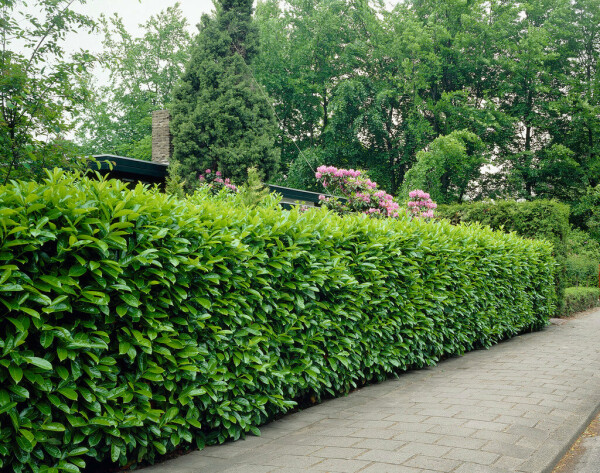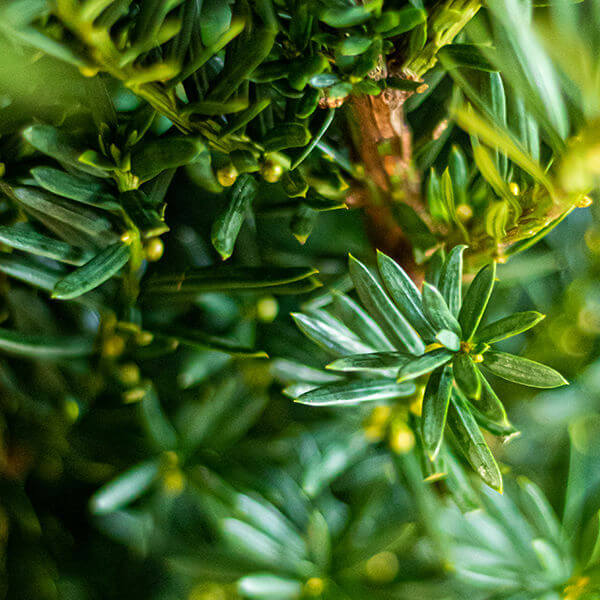Best Hedging Plants For Flowering Hedges
Best Hedging Plants For Flowering Hedges
Blog Article
Best Hedging Plants For Spring Blooms
Boost your garden's attraction with rich hedge varieties such as Yew (Taxus), Thuja, Laurel, Photinia, and Bamboo, commemorated for their structural stability and ecological benefits.
Yew and Thuja supply evergreen coverage and winter season resilience, while Laurel provides rapid growth and broad, aromatic leaves.
Photinia adds seasonal appeal with its lively red foliage, and Bamboo provides a low-maintenance, serene atmosphere.
These hedges enhance air quality, reduce noise, and develop tranquil, personal spaces.
Appropriate planting, spacing, and upkeep ensure vigorous growth and eco-friendly consistency.
Explore how these rich ranges can elevate your garden's appeal and wellness.
Key Takeaways
Change Your Garden With Lush Hedge Ranges
- Select Yew for its thick, evergreen development and unrivaled longevity.
- Select Laurel for its fast growth and broad leaves, guaranteeing quick personal privacy.
- Pick Photinia for its lively seasonal foliage, which turns a striking dark red.
- Utilize Bamboo for a low-maintenance, winter-hardy hedge with aesthetic appeal.
- Space plants 2-3 per meter and prune regularly for ideal growth and health.
Popular Hedge Plants
When transforming a garden with rich hedge varieties, it's vital to think about popular hedge plants such as Yew, Thuja, Laurel, and Photinia due to their special attributes and advantages.
Yew (Taxus) is extremely respected for its durability and thick, green growth, making it a prime choice for enduring landscapes.
Thuja is noted for its evergreen foliage and robust winter resilience.
Photinia includes seasonal vibrancy with red leaves that darken with time, developing vibrant visual appeal.
Laurel provides fast growth and fragrant, broad leaves, perfect for fast privacy.
Furthermore, Bamboo is an outstanding choice for atmosphere, providing a low-maintenance, winter-hardy choice that improves the garden's visual with its elegant, swaying canes.
These selections deal with a range of horticultural requirements and choices.
Benefits of Garden Hedges
Garden hedges offer a wide variety of benefits, making them a valuable addition to any landscape. These natural barriers are cost-efficient to execute and offer significant wind defense, improving air circulation and adding to noise reduction. The thick foliage of hedges like Thuja and Beech ensures personal privacy by obstructing visibility, producing a serene and remote environment.
Hedges likewise play an essential function in microclimate policy, supplying a stable environment that cultivates plant growth and decreases temperature fluctuations. Their complex leaf structures filter pollutants, enhancing air quality and contributing to a healthier garden environment.
Moreover, hedges master noise decrease, absorbing and deflecting acoustic waves to lower ambient noise levels. This dual performance of offering both visual and acoustic personal privacy boosts the general tranquility and aesthetic appeal of any garden.
Planting and Maintenance Tips
For an effective hedge, precise preparation of the planting area is crucial. Guarantee the soil has correct pH and drain to support strong root development.
Area the plants appropriately for the picked species. Water the hedge often during its preliminary development stage, adjusting as required with seasonal changes.
Carry out a methodical insect control and illness avoidance method, using organic or chemical treatments when necessary. Routinely check for aphids, termites, and fungal infections.
Apply mulch to retain moisture and suppress weeds. Seasonal pruning promotes dense development and air blood circulation, necessary for plant health.
Following these guidelines will help you cultivate a vibrant, properly maintained hedge that boosts the appeal of your garden.
Spacing and Trimming Guidelines
Spacing and Trimming Guidelines
Appropriate spacing and trimming are essential for cultivating healthy, visually appealing hedges. Sufficient spacing guarantees each plant receives adequate nutrients, light, and airflow.
Follow these guidelines for optimal hedge maintenance:
- Spacing: Position hedge plants 2-3 plants per meter to encourage robust growth.
- Pruning Strategies: Routine pruning is necessary for keeping wanted hedge height and shape. Trim brand-new development in summertime and cut down older wood during winter.
- Seasonal Care: Adjust cutting schedules and approaches according to seasonal requirements to guarantee plant health.
- Hedge Height: Regularly monitor and trim to keep the wanted hedge height and accomplish uniform visual appeals.
Abiding by these steps will ensure your hedge grows, boosting both the appeal and functionality of your garden.
Choosing the Right Hedge
Picking the Right Hedge
Picking the suitable hedge involves examining factors such as fully grown height, foliage density, and ecological resilience. Effective hedge plant selection needs comprehending each species' development qualities and site-specific adaptability.
For instance, Yew (Taxus) offers excellent durability and dense development, while Thuja is noteworthy for its winter season durability. Additionally, thinking about maintenance requirements is important; fast-growing species like Laurel or Privet need regular cutting, whereas low-maintenance options like Bamboo or Ivy may be preferable for those looking for minimal maintenance.
Ecological elements such as soil type, light schedule, and moisture conditions must also direct the choice procedure. This mindful technique guarantees the chosen hedges will grow, offering both functional and visual benefits to the garden landscape.
Delivery and Planting Suggestions
To ensure your hedge plants thrive, they must be provided by specialized couriers and planted immediately upon arrival.
Follow these essential steps for effective planting:
- Soil Preparation: Improve the soil with raw material to enhance drain and nutrient material.
- Planting Depth: Create a trench twice the width and equivalent to the depth of the root ball.
- Watering Strategies: Water thoroughly after planting, keeping the soil consistently damp however not saturated.
- Mulching: Apply a layer of mulch to keep moisture and reduce weeds.
Consumer Assistance and Service
Offered the crucial role of timely support in horticultural pursuits, our client assistance group is readily available 6 days a week through telephone, email, and social media to offer professional guidance and quickly attend to any issues. Their commitment to fast reaction times guarantees client fulfillment by solving questions connected to plant health, optimum planting approaches, and upkeep schedules.

Reaction Time
-------------------
Within 24 hours
This comprehensive support group, enhanced by an excellent 9.3/ 10 customer rating, highlights our commitment to improving the gardening experience for each customer.
Regularly Asked Concerns
The Length Of Time Does It Take for Hedge Plants to Develop?
Hedge plants generally require one to three years to become fully established, with the precise duration varying by species and growing conditions.
Effective care during this critical period is essential for robust growth. Constant watering, alert weed control, and proper fertilizer application are essential in promoting strong root advancement.
For instance, fast-growing species like Laurel may establish quicker, while slower-growing varieties such as Yew might take longer. Thorough upkeep speeds up the establishment process, resulting in healthy and thick hedges.
What Are the Finest Hedge Plants for Privacy?
The question of the finest hedge plants for personal privacy includes assessing evergreen and deciduous options.
Evergreen hedges like Thuja, Laurel, and Cypress supply year-round protection, guaranteeing continuous privacy.
On the other hand, deciduous hedges such as Beech offer seasonal privacy, shedding leaves in colder months.
Secret upkeep pointers for personal privacy hedges include regular trimming, fertilizing in spring, and correct spacing-- normally 2 to 3 plants per meter.
Furthermore, consistent watering and diligent weed elimination are important for promoting healthy, dense growth.
Can Hedge Plants Bring In Wildlife to My Garden?
Yes, hedge plants can draw in wildlife to your garden by offering important benefits like shelter, food, and nesting websites, thus enhancing regional biodiversity. Yew, holly, and laurel are outstanding for bring in birds, while ivy supports a variety of pests.
However, it is necessary to note that there are some downsides, such as increased maintenance to handle pests and regular maintenance. Carefully choosing and keeping hedge varieties can assist balance these disadvantages and benefits, ultimately cultivating a vibrant and sustainable environment in your garden.
Are There Any Flowering Hedge Plants Available?
Yes, there are flowering hedge plants offered that can boost the beauty of your garden.
For instance, Elaeagnus, likewise known as Olive Willow, produces fragrant white flowers in the fall, including a touch of sophistication.
Photinia, another popular choice, showcases lively red leaves that develop into an abundant green, creating a vibrant visual effect throughout the seasons.
To make sure these plants prosper, it's vital to practice proper pruning methods and seasonal upkeep, such as trimming new development in the summer season and cutting down in the winter season.
These procedures will assist maintain the health and aesthetic appeal of your blooming hedges.
How Do I Avoid Bugs in My Hedge Plants?
To prevent pests in hedge plants, utilize natural insect control approaches and preserve appropriate hedge care. Present helpful insects like ladybugs, which prey on harmful pests, to produce a well balanced community.
Routinely examine your hedges for signs of problem and promptly remove any afflicted parts to prevent the spread. Ensure the health of your hedges by applying balanced fertilizers and offering adequate water.
Utilize mulching to retain soil wetness and correct spacing to lower plant tension and promote robust growth. These practices collectively help in reducing pest issues and maintaining a healthy hedge.
Conclusion
In essence, picking the ideal hedge ranges such as Yew, Thuja, and Laurel can transform any garden into a tranquil sanctuary. These plants supply year-round greenery, enhance visual appeal, and deal practical benefits like sound reduction and wind security.
Proper planting strategies, precise spacing, constant watering, and seasonal trimming are vital for optimal development.
Trustworthy delivery services and expert client support make sure a smooth experience from purchase to planting, making it simpler than ever to raise your outdoor space.
Garden hedges offer a plethora of benefits, making them a valuable addition Additional info to any landscape. These natural barriers are economical to implement and provide substantial wind protection, boosting air circulation and contributing to noise reduction. The thick foliage of hedges like Thuja and Beech guarantees personal privacy by obstructing visibility, creating a remote and serene environment.

Pruning Strategies: Routine pruning is vital for preserving desired hedge height and shape. Cut brand-new growth in summer and cut back older wood throughout winter.
Report this page